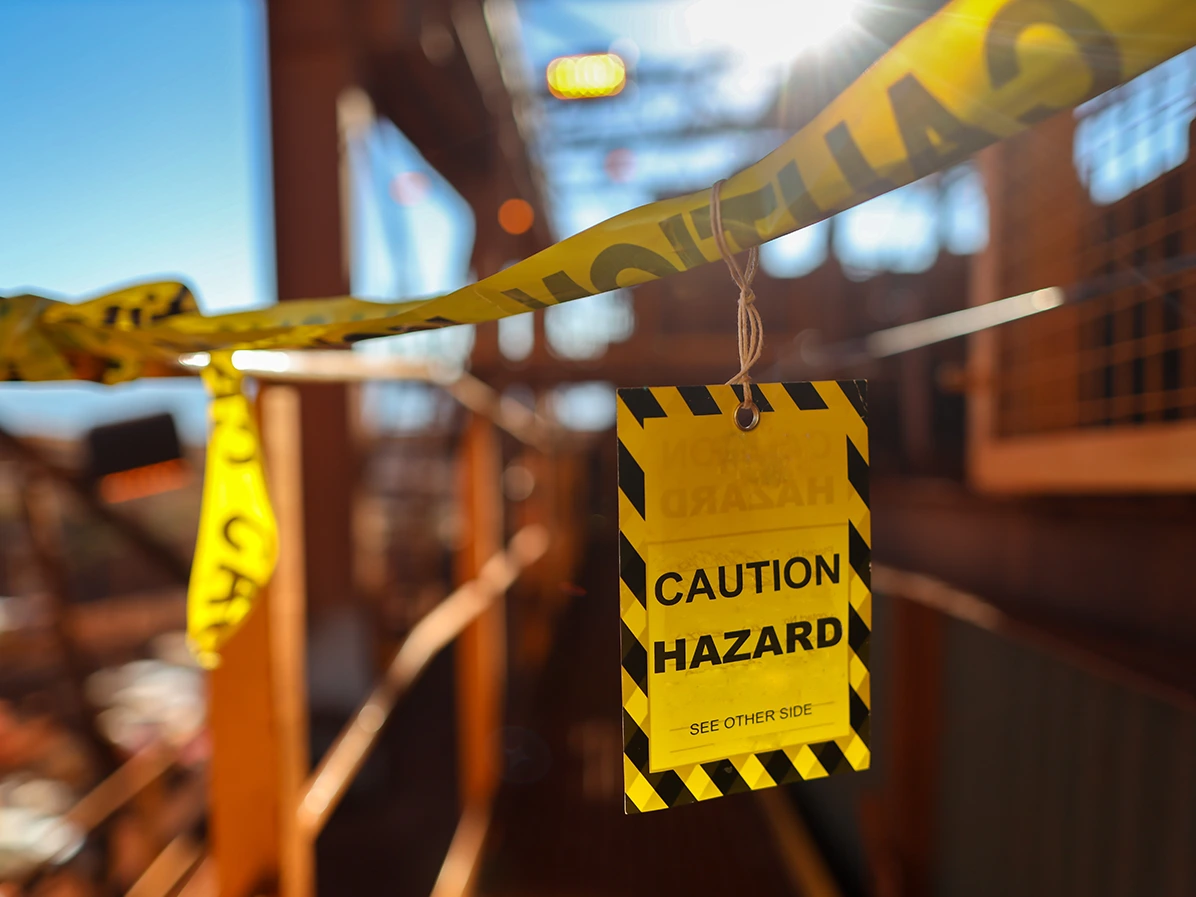Contents
Leading and Lagging Indicators For EHS&S: Top KPIs to Track
12 August 2025
If you are a safety professional or work in your organization’s EHS department, take a moment and ask yourself the following questions:
How is your organization performing from a health and safety perspective? Are workplace hazards being sufficiently identified and addressed? What are the results of recent changes to your safety processes?
If you don’t know the answers to these questions, this may be a sign that you have not established critical health and safety key performance indicators (KPIs). KPIs are the benchmark for a successful health and safety program. Without them, you’re left with guesswork. In this article, we’ll explain the importance of setting safety performance indicators and how to tie them into wider business goals.
What Are Key Performance Indicators for EHS?
Key performance indicators (KPIs) are measurable values used to evaluate how effectively an organization is achieving specific EHS goals. These metrics provide a framework for identifying trends, tracking progress and ensuring accountability across safety initiatives.
There are two main types of KPIs: lagging indicators and leading indicators. Let’s take a closer look at them below.
Leading Indicators of EHS Performance
Leading indicators are forward-looking metrics that track proactive efforts and behaviors used to prevent incidents from occurring. They can be used to predict and identify failures before they happen, providing insight into how well safety systems and programs function.
Important EHS leading indicators include:
-
Percentage of managers and workers with adequate EHS training
-
Number of workplace inspections and audits
-
Frequency of observed safe (or unsafe) behaviors
-
Participation rates in safety meetings or toolbox talks
-
Use and maintenance of personal protective equipment (PPE)
-
Near miss reports submitted
-
Preventative maintenance completed on time
-
Completion rates of corrective actions
-
Safety checklist completions
OSHA's SMART Principles for Leading Indicators
OSHA recommends that leading indicators be developed using the SMART framework: Specific, Measurable, Achievable, Relevant and Time-bound. This ensures the indicators are clear, actionable and tied to meaningful safety outcomes.
-
Specific: Clearly define what is being measured and why.
-
Measurable: Use quantifiable metrics so you can track progress over time and identify trends.
-
Achievable: Set targets that are realistic and within the control of your team.
-
Relevant: Align indicators with the organization’s safety goals and key risks.
-
Time-bound: Establish a timeframe for when data will be collected and reviewed.
Lagging Indicators of EHS Performance
Lagging indicators track what has already occurred. These indicators are backward-facing and reflect the outcomes of safety efforts, often being used to assess historical performance and identify trends or recurring issues that need to be addressed. Regulatory bodies often mandate reporting for these metrics to benchmark safety performances across industries and job types.
Examples of lagging indicators for health and safety include:
-
Total recordable incident rate (TRIR)
-
Fatality rate
-
Workers’ compensation claims
-
Early retirements or long-term disability cases
-
Occupational illness reports
-
Average severity rate of injuries
Why You Need Both Leading and Lagging Indicators
To get a complete picture of your organization’s safety performance, you must track both leading and lagging indicators. Relying solely on lagging indicators may tell you where things went wrong, but they can’t help you prevent future issues. Likewise, focusing only on leading indicators provides insight into what could go wrong but won’t validate the actual outcomes of your efforts.
Think of leading indicators like the warning lights on your car’s dashboard. They alert you when the engine is overheating, oil is low or tire pressure is off. These signals don’t mean the car has failed yet, but they give you the chance to act before something serious happens. Lagging indicators are what you must deal with after ignoring those warnings, such as the engine seizing or tires blowing out. At that point, you're no longer preventing a problem, but managing the consequences.
The same is true for workplace safety. Leading indicators help you stay ahead of risks, and lagging indicators help you learn from past events. You need both to keep your safety program running smoothly and effectively.
Benefits of Setting Safety Performance Indicators
It's critical to remember that behind every KPI is an individual or a business process protecting the well-being of an individual. Setting KPIs gives your safety program structure, clarity and direction. Without them, you’re unable to measure progress or know when something needs to change.
When KPIs are clearly established and regularly tracked, they provide a reliable foundation for proactive decision-making. They allow leaders to identify potential hazards early, allocate resources more effectively and benchmark performance across sites, departments or time periods.
This visibility not only supports compliance but also builds credibility. When safety leaders can demonstrate measurable progress, they’re more likely to gain buy-in from leadership, unlock additional investment and encourage adoption of EHS best practices.
Why Safety KPIs Need To Be Part of Wider Business Goals
Health and safety data should not be siloed. Instead, it must be considered alongside broader operational metrics to provide a wholistic picture of business performance. Operational efficiency, workforce productivity and financial performance are all influenced by the health and safety of your employees. Ignoring this connection leads to missed insights and reactive management.
By integrating safety KPIs into broader business dashboards, organizations gain a holistic understanding of how EHS affects their bottom line. For example, a rise in near miss reports may signal systemic issues that could disrupt production. Similarly, a decline in training participation may indicate persistent engagement challenges. Establishing these relationships helps positions safety as an organizational core value, not just a compliance obligation.
Best Practices for Choosing KPIs for Safety Initiatives
Consider the following best practices when tracking KPIs for your EHS program:
-
Encourage employee engagement: Insufficient data is bad data. Encourage frontline employees to report near misses, unsafe behaviors and workplace hazards to establish an accurate picture of an organization’s safety performance.
-
Establish feedback loops: Create processes for regularly reviewing performance data and sharing it with relevant teams. Use this feedback to adjust your approach to workplace hazards.
-
Be flexible: What works for a small site may not be relevant for a growing global operation. Revisit your KPIs as your organization evolves.
-
Act on lagging indicators: Data means little without thorough follow-up. Use insights from past incidents to guide prevention strategies.
-
Make KPIs visible: Transparency promotes accountability and keeps safety an organizational core value.
-
Use technology: Robust EHS software makes it easy to measure and track key targets, monitor KPIs and ensure the company is on track to hit them. Leverage digital tools to automate data collection, identify trends and provide real-time dashboards that support proactive risk management.
If you want to see how EHS software can support your wider business goals, schedule a chat with one of our EHS professionals today.

RELATED BLOGS

What Is Safety Incident Management and Why Does It Matter?
14 February 2023 - Team Evotix
Today, workplace accidents still occur all too frequently. In North America alone, 2022 saw 2.6 million reported workplace accidents and illnesses. There are many reasons for workplace incidents to..

7 Must-Have Features in Safety Incident Management Software
7 August 2024 - Team Evotix
Ensuring compliance with EHS&S regulations requires organizations to meticulously track, monitor and document workplace incidents, both as a regulatory requirement and a best practice.

How Environmental Compliance Software Can Help You Navigate Regulations
20 August 2024 - Team Evotix
As environmental concerns have gained both political and public importance, the regulations around environmental protection have increased in number and complexity. Increased understanding of the..
